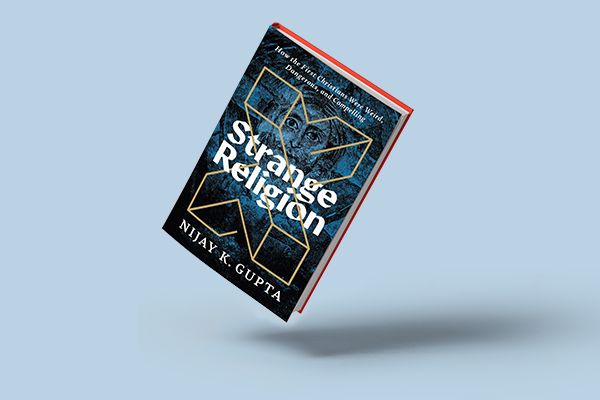AROUND MY NECK hangs a cross made of polished pear wood and brushed steel. Growing up, I was taught that it was a timeless, universal reminder of Christian faith. But as Nijay K. Gupta reveals in a new book, Strange Religion, it can also be seen as a tangible reminder of another truth: The earliest Christians were weird.
As Gupta writes, “Weird is not always bad ... weird can be good. But weird can also be dangerous.” This danger was precisely why the earliest Christians were regarded with suspicion, even fear, by the Romans. “Christians had no temples, no priests, and no cult statues,” Gupta writes. “They had no sacred legends or texts of their own in the first century. ... They went out and intentionally tried to spread their religious practices far and wide.” Because the power of the Roman Empire depended on the strength of its civic religion and practices, “this naturally brought [early Christians] under suspicion” by the authorities. A threat to the religious status quo was seen as directly undermining the stability of the state.
Gupta focuses his latest book on the decades after the crucifixion when the church was becoming established. (He is sometimes vague about the precise period he is covering, though it is roughly the first century C.E.) He is also a scholar of the New Testament and not of Roman history, and in places, this weakens his argument. Gupta seems to take some Roman historical sources at face value, when, as historian Mary Beard describes in last year’s Emperor of Rome, it may be ultimately impossible to fully parse out the propaganda from the truth.
One thing that is clear is that for the Romans, the cross functioned as a symbol and an extension of the state — and by the time of the early Christians, of the empire and its emperor. Over time, the cross evolved from a symbol of Roman domination and power to a Christian symbol of hope and life everlasting.
Given Gupta’s interest in public scholarship and writing accessible works, he misses an opportunity to connect this history to the present state of the U.S. church. How can the “strange” origins of the early Christians inform the state of Christianity today? The book edges up to this question: “I am struck,” Gupta writes, “by the contrast between modern American Christianity ... and the Jesus communities of the first centuries. When it comes to the [early] churches ... you couldn’t imagine a more opposite scenario!” But he passes up the opportunity to go any further — such as exploring how Christian nationalism, allied with state power today, is radically different from Christianity’s early roots.
Nonetheless, Strange Religion is worth reading. It would be a particularly rich book for discussion groups interested in applying its lessons to modern-day church practices because it serves as the setup to a thought exercise: What would it take for the modern church to become as strange to those presently in power as the early church was to the Romans?

Got something to say about what you're reading? We value your feedback!

